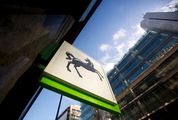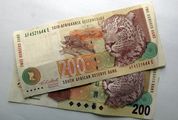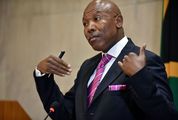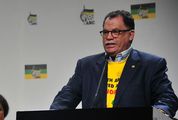Business rescue on the rise
by Ntsakisi Maswanganyi
2016-06-28 06:08:26.0
FEWER companies were liquidated in May compared with a year ago, which may indicate companies are choosing other methods of winding up.
The number of liquidations decreased by 1.1% to 177 in May compared with May 2015, Statistics SA data showed on Monday.
Bowman Gilfillan director Adam Harris said the latest figures might reflect a change in how companies wind up their businesses rather than a reduction in the number of companies going under.
"There is a perception that liquidations destroy the value of the asset and so many businesses are opting for business rescue as opposed to approaching liquidators," Harris said.
In future, there would be "a greater increase in companies opting for business rescue as this is considered a cheaper and easier option", Harris said.
Liquidations and insolvencies data are important indicators of the scope of unpaid debt in SA, according to Stats SA.
The higher the liquidations and insolvencies, the higher the level of unpaid debt and the negative effect on economic growth.
Insolvencies, referred to by Stats SA as an individual or partnership which is unable to pay its debt and is placed under final sequestration, increased by 12.6% in April 2016 compared with April 2015. Insolvencies were up 2.7% in the three months ended April 2016 compared with the three months to end April 2015.
The increase in insolvencies was not surprising given the increasing costs facing consumers including for food and electricity, in an environment of high debt levels and retrenchments. The economy lost over 300,000 jobs and contracted by 1.2% in the first quarter.
While the growth rate in the second quarter of 2016 might improve relative to the decline in the first quarter, the economy would likely remain weak in the second half of 2016 and might not achieve any growth for 2016 as a whole, Stanlib chief economist Kevin Lings said.
"This low growth projection partly reflects our concerns that higher inflation, which appears likely to reach around 8% year on year before the end of 2016, coupled with rising interest rates will systematically erode consumer spending," Lings said.

Picture: THINKSTOCK
FEWER companies were liquidated in May compared with a year ago, which may indicate companies are choosing other methods of winding up.
The number of liquidations decreased by 1.1% to 177 in May compared with May 2015, Statistics SA data showed on Monday.
Bowman Gilfillan director Adam Harris said the latest figures might reflect a change in how companies wind up their businesses rather than a reduction in the number of companies going under.
"There is a perception that liquidations destroy the value of the asset and so many businesses are opting for business rescue as opposed to approaching liquidators," Harris said.
In future, there would be "a greater increase in companies opting for business rescue as this is considered a cheaper and easier option", Harris said.
Liquidations and insolvencies data are important indicators of the scope of unpaid debt in SA, according to Stats SA.
The higher the liquidations and insolvencies, the higher the level of unpaid debt and the negative effect on economic growth.
Insolvencies, referred to by Stats SA as an individual or partnership which is unable to pay its debt and is placed under final sequestration, increased by 12.6% in April 2016 compared with April 2015. Insolvencies were up 2.7% in the three months ended April 2016 compared with the three months to end April 2015.
The increase in insolvencies was not surprising given the increasing costs facing consumers including for food and electricity, in an environment of high debt levels and retrenchments. The economy lost over 300,000 jobs and contracted by 1.2% in the first quarter.
While the growth rate in the second quarter of 2016 might improve relative to the decline in the first quarter, the economy would likely remain weak in the second half of 2016 and might not achieve any growth for 2016 as a whole, Stanlib chief economist Kevin Lings said.
"This low growth projection partly reflects our concerns that higher inflation, which appears likely to reach around 8% year on year before the end of 2016, coupled with rising interest rates will systematically erode consumer spending," Lings said.























